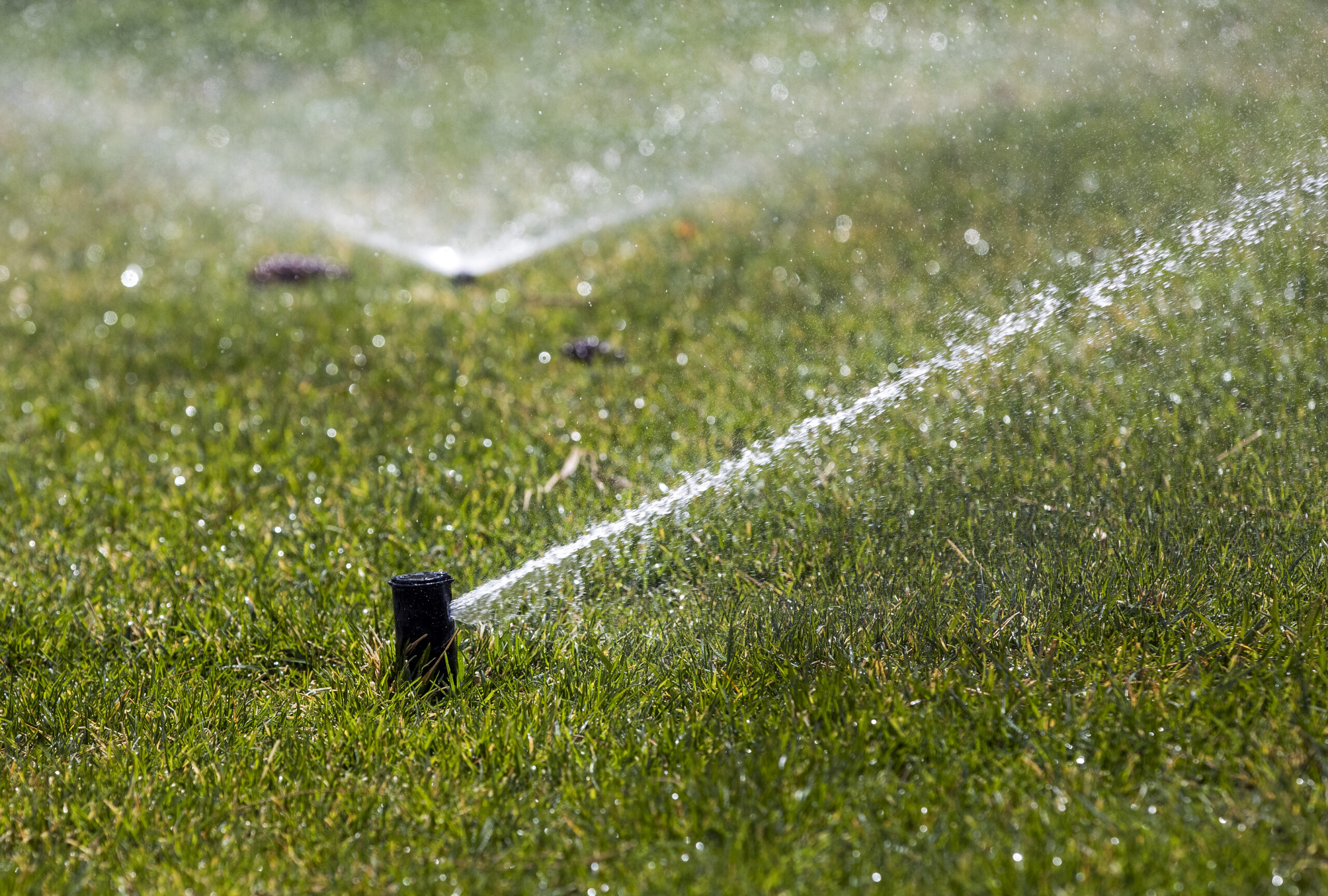Legislative committee advances water authority proposal aimed at removing decorative turf to conserve Colorado River water

The Assembly Committee on Natural Resources voted Friday to advance a legislative proposal, pushed by the Southern Nevada Water Authority, to require the removal of about 5,000 acres of unused grass, an action that could save billions of gallons of Colorado River water each year.
Lawmakers voted 8-3 to pass the measure out of committee before a key deadline. If approved by the Legislature, the new law would require the water authority’s board of directors to develop a strategy to remove unused grass — turf irrigated for purely decorative purposes — by the end of 2026.
Removing roughly 5,000 acres of turf, currently irrigated by Colorado River water, would save about 12 billion gallons, or 36,000 acre-feet, of water each year, according to the water authority's estimates. That would amount to more than 10 percent of Nevada’s 300,000 acre-foot allocation from the Colorado River.
The measure comes at a time when water authority officials have emphasized the necessity of conserving more water, especially as politicians in Las Vegas eye new growth and the Colorado River faces a dwindling supply amid long-term drought and warming driven by climate change.
In an interview last month, Colby Pellegrino, a deputy general manager for the water authority, said the agency’s water resource plan is based on meeting certain conservation goals. Getting rid of decorative grass in medians, along streets and at business parks is crucial to meeting those goals.
“Water conservation is our number one, number two and number three resource,” she said.
In the past, the water authority has mainly relied on voluntary measures to reduce outdoor irrigation, a significant driver of demand within the system. For years, the agency has offered incentives to entice property owners into ripping out their grass and replacing it with desert landscaping.
But at a recent meeting, water authority officials told the local government officials who comprise their board of directors that the incentives, on their own, might not get the agency to its goals. In particular, the water authority has met resistance from the boards of homeowners associations.
“The era where just carrots are going to get where we’re going to get is coming to the end,” said John Entsminger, the agency’s general manager. “We’re going to have to use some sticks.”
Not only has the water authority successfully made its case to local elected officials, it also was able to persuade business interests, developers and local governments to endorse its turf removal mandates.
When the water authority first floated the proposal during a legislative hearing on Monday, the Vegas Chamber, the Southern Nevada Home Builders Association, the city of Henderson and the city of North Las Vegas all testified in support of the water authority’s proposed language.
“Today is not the time to prioritize water usage for purely aesthetic reasons,” Matt Walker, a lobbyist for the homebuilders, said during the hearing on Monday. “We need to prioritize this precious resource where it’s going to move the needle for our community and our economy.”
On Monday, water authority lobbyist Andy Belanger proposed the turf removal program as an amendment to AB356, legislation proposed by the state’s Division of Water Resources.
Assemblyman Howard Watts (D-Las Vegas), who chairs the Assembly Committee on Natural Resources, brought the water authority’s proposal forward as an amendment. It removed the state’s proposal and replaced the language with the water authority’s proposal.
On Friday, the committee approved the amendment with little discussion. Seven Democrats on the committee supported the language and one Republican lawmaker, Assemblywoman Alexis Hansen (R-Sparks), backed the measure.
The political maneuver could flip the script on the discussion around AB356, which as originally proposed by the state, drew the ire of conservationists, ranchers and farmers. They expressed concerns that the state’s original proposal, a conservation credit system, was not fully vetted with water users and could have unintended consequences, including speculative behavior.
In past legislative sessions, these same groups have often directed their ire at the water authority, which until last year, was pursuing a controversial project to import rural groundwater.
Already, some of these groups flipped to support AB356, as amended. For years, they have been pushing the water authority to double-down on aggressive conservation measures.
Kyle Roerink, executive director of the Great Basin Water Network, said his group supports the amended version of AB356. But he said the proposal “should not be construed as an invitation to consume more water."
"This effort is a reality check for us all. Lake Mead is headed for another round of cuts. And the likelihood of getting to elevations where Hoover Dam cannot generate power are increasingly closer,” Roerink wrote in an emailed statement. “AB356 as amended is an important policy tool that buys time.”
